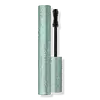What's inside
What's inside
 Key Ingredients
Key Ingredients

No key ingredients
 Benefits
Benefits

 Concerns
Concerns

 Ingredients Side-by-side
Ingredients Side-by-side

Water
Skin ConditioningBeeswax
Emulsion StabilisingButyrospermum Parkii Butter
Skin ConditioningPolyglyceryl-6 Distearate
EmulsifyingDimer Dilinoleyl Dimer Dilinoleate
EmollientGlycerin
HumectantCopernicia Cerifera Wax
Polyglyceryl-10 Myristate
Skin ConditioningCetyl Alcohol
EmollientGlyceryl Caprylate
EmollientLeuconostoc/Radish Root Ferment Filtrate
AntimicrobialZea Mays Starch
AbsorbentXanthan Gum
EmulsifyingArginine
MaskingPhenethyl Alcohol
MaskingAgropyron Repens Root Extract
MaskingPotassium Sorbate
PreservativeSodium Benzoate
MaskingCI 77499
Cosmetic ColorantWater, Beeswax, Butyrospermum Parkii Butter, Polyglyceryl-6 Distearate, Dimer Dilinoleyl Dimer Dilinoleate, Glycerin, Copernicia Cerifera Wax, Polyglyceryl-10 Myristate, Cetyl Alcohol, Glyceryl Caprylate, Leuconostoc/Radish Root Ferment Filtrate, Zea Mays Starch, Xanthan Gum, Arginine, Phenethyl Alcohol, Agropyron Repens Root Extract, Potassium Sorbate, Sodium Benzoate, CI 77499
Isododecane
EmollientParaffin
PerfumingVp/Eicosene Copolymer
Beeswax
Emulsion StabilisingDisteardimonium Hectorite
StabilisingPentaerythrityl Hydrogenated Rosinate
Cyclopentasiloxane
EmollientTalc
AbrasiveCopernicia Cerifera Wax
Polybutene
Water
Skin ConditioningSilica
AbrasiveCaprylyl Glycol
EmollientPolyquaternium-7
Plukenetia Volubilis Seed Oil
EmollientTrimethylpentanediol/Adipic Acid/Glycerin Crosspolymer
Skin ConditioningVp/Hexadecene Copolymer
Caprylic/Capric Triglyceride
MaskingOctyldodecanol
EmollientHoya Lacunosa Flower Extract
Skin ConditioningPhenoxyethanol
PreservativeSodium Benzoate
MaskingCI 77499
Cosmetic ColorantIsododecane, Paraffin, Vp/Eicosene Copolymer, Beeswax, Disteardimonium Hectorite, Pentaerythrityl Hydrogenated Rosinate, Cyclopentasiloxane, Talc, Copernicia Cerifera Wax, Polybutene, Water, Silica, Caprylyl Glycol, Polyquaternium-7, Plukenetia Volubilis Seed Oil, Trimethylpentanediol/Adipic Acid/Glycerin Crosspolymer, Vp/Hexadecene Copolymer, Caprylic/Capric Triglyceride, Octyldodecanol, Hoya Lacunosa Flower Extract, Phenoxyethanol, Sodium Benzoate, CI 77499
 Reviews
Reviews

Ingredients Explained
These ingredients are found in both products.
Ingredients higher up in an ingredient list are typically present in a larger amount.
Beeswax is natural wax produced by honey bees and can be synthetically created. It consists mainly of fatty acid esters and long-chain alcohols.
In cosmetics, beeswax is a emollient. Due to its waxy structure, it creates a protective barrier. This barrier prevents water from evaporating off the skin.
This may not be a good ingredient for oily skin. We recommend speaking with a professional if you have concerns.
Beeswax cannot be removed with water, but can be taken off with an oil cleanser.
Beeswax is also antiseptic and contains vitamin A.
Learn more about BeeswaxCi 77499 is also hydrated iron III oxide. It is created from mixing red and black iron oxides. This helps give shades of darkness to a product.
Iron III oxides are classified as inorganic chemicals for coloring.
Copernicia Cerifera Wax comes from a palm tree native to Brazil; another name for this ingredient is Carnauba Wax.
This ingredient is used to thicken texture and also leaves behind a film when applied.
Fun fact: This wax has the highest melting point of all natural waxes and low solubility.
Learn more about Copernicia Cerifera WaxSodium Benzoate is a preservative. It's used in both cosmetic and food products to inhibit the growth of mold and bacteria. It is typically produced synthetically.
Both the US FDA and EU Health Committee have approved the use of sodium benzoate. In the US, levels of 0.1% (of the total product) are allowed.
Sodium benzoate works as a preservative by inhibiting the growth of bacteria inside of cells. It prevents the cell from fermenting a type of sugar using an enzyme called phosphofructokinase.
It is the salt of benzoic acid. Foods containing sodium benzoate include soda, salad dressings, condiments, fruit juices, wines, and snack foods.
Studies for using ascorbic acid and sodium benzoate in cosmetics are lacking, especially in skincare routines with multiple steps.
We always recommend speaking with a professional, such as a dermatologist, if you have any concerns.
Learn more about Sodium BenzoateWater. It's the most common cosmetic ingredient of all. You'll usually see it at the top of ingredient lists, meaning that it makes up the largest part of the product.
So why is it so popular? Water most often acts as a solvent - this means that it helps dissolve other ingredients into the formulation.
You'll also recognize water as that liquid we all need to stay alive. If you see this, drink a glass of water. Stay hydrated!
Learn more about Water